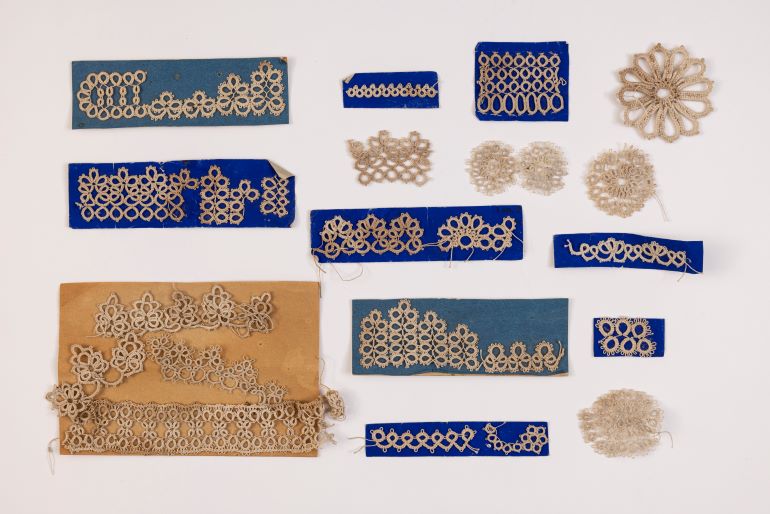Tatting samples
Categories
Themes
Collection
Museum of English Rural Life (The MERL) Object CollectionDate
Probably 1800s
Object Number
65/336/8-22
Description
‘Tatting’ is a form of lacemaking that produces a garment more durable than crocheted lace. It particularly focuses on knots within the fabric, and is thought to derive from ancient sailors using knots to create their fishing nets. Originally, patterns were made with a series of knots and this evolved into the practice which was first called ‘tatting’ in 1843. Traditionally, tatting was most commonly done with a shuttle, an oval shaped metal implement which feeds the threads through the required loops to create tatting knots. It was typically cheaper than other types of lacemaking, using only one knot (known commonly as the lark’s head knot).
Although tatting had begun to gain popularity in the ninteenth century, it is not a craft that can be replicated by any machine and so did not benefit from increased mechanisation of garment making. As such, it is now a more niche craft than sewing, knitting or crochet, but does still have dedicated practitioners across the country. [/vc_column_text][/vc_column][/vc_row]
